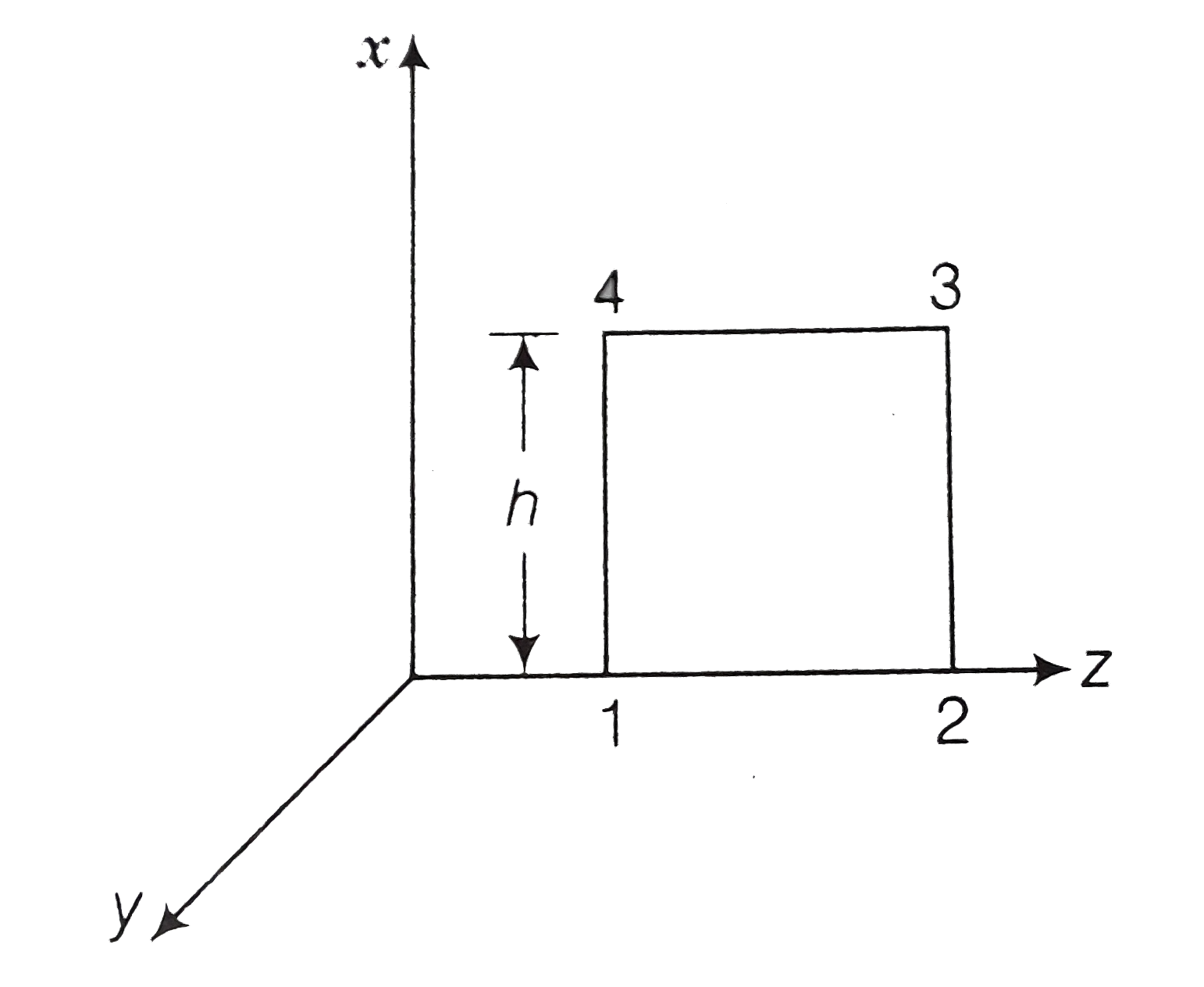An electromagnietic wave is travelling in vacuum and its equation in the form of electric field is given by →E=−asin(kz−ωt)ˆi−bsin(kz−ωt)ˆj then its equation in the form of magnetic field will be
→B=bˆi−aˆjcsin(kz−ωt)
→B=bˆi+aˆjcsin(kz−ωt)
→B=−bˆi−aˆjcsin(kz−ωt)
→B=−bˆi+aˆjcsin(kz−ωt)
To find the magnetic field corresponding to the given electric field of an electromagnetic wave, we can follow these steps:
1. Identify the Given Electric Field:
The electric field →E is given as:
→E=−asin(kz−ωt)^i−bsin(kz−ωt)^j
We can factor out the common term:
→E=−sin(kz−ωt)(a^i+b^j)
2. Convert to Standard Form:
We can rewrite the electric field in a more standard form:
→E=(a^i+b^j)sin(ωt−kz)
Here, we have used the property of sine that sin(−x)=−sin(x).
3. Determine the Magnitude of the Electric Field:
The magnitude of the electric field E0 is:
E0=√a2+b2
4. Relate Electric Field to Magnetic Field:
In electromagnetic waves, the relationship between the electric field E0 and the magnetic field B0 is given by:
B0=E0c
where c is the speed of light in vacuum.
5. Determine the Direction of the Magnetic Field:
The direction of the magnetic field →B can be found using the right-hand rule. The electric field →E is in the plane formed by ^i and ^j, and the wave is propagating in the z-direction (along ^k). Therefore, the magnetic field →B will be perpendicular to both →E and the direction of propagation.
6. Calculate the Unit Vector for Magnetic Field:
The unit vector in the direction of →B can be calculated using the cross product:
^B=^k×^E
where ^E=1E0(a^i+b^j).
7. Compute the Cross Product:
The cross product ^k×(a^i+b^j) gives:
^k×^i=^j,^k×^j=−^i
Therefore,
^B=^k×(a^i+b^j)=a^j−b^i
8. Write the Magnetic Field Vector:
The magnetic field vector →B can now be expressed as:
→B=B0^Bsin(ωt−kz)=√a2+b2c(a^j−b^i)sin(kz−ωt)
9. Final Form of the Magnetic Field:
Thus, the magnetic field →B is:
→B=√a2+b2c(a^j−b^i)sin(kz−ωt)
Final Answer:
→B=√a2+b2c(a^j−b^i)sin(kz−ωt)
The electric field →E is given as:
→E=−asin(kz−ωt)^i−bsin(kz−ωt)^j
We can factor out the common term:
→E=−sin(kz−ωt)(a^i+b^j)
We can rewrite the electric field in a more standard form:
→E=(a^i+b^j)sin(ωt−kz)
Here, we have used the property of sine that sin(−x)=−sin(x).
The magnitude of the electric field E0 is:
E0=√a2+b2
In electromagnetic waves, the relationship between the electric field E0 and the magnetic field B0 is given by:
B0=E0c
where c is the speed of light in vacuum.
The direction of the magnetic field →B can be found using the right-hand rule. The electric field →E is in the plane formed by ^i and ^j, and the wave is propagating in the z-direction (along ^k). Therefore, the magnetic field →B will be perpendicular to both →E and the direction of propagation.
The unit vector in the direction of →B can be calculated using the cross product:
^B=^k×^E
where ^E=1E0(a^i+b^j).
The cross product ^k×(a^i+b^j) gives:
^k×^i=^j,^k×^j=−^i
Therefore,
^B=^k×(a^i+b^j)=a^j−b^i
The magnetic field vector →B can now be expressed as:
→B=B0^Bsin(ωt−kz)=√a2+b2c(a^j−b^i)sin(kz−ωt)
Thus, the magnetic field →B is:
→B=√a2+b2c(a^j−b^i)sin(kz−ωt)
→B=√a2+b2c(a^j−b^i)sin(kz−ωt)
Topper's Solved these Questions
Similar Questions
Knowledge Check
An electromagnetic wave is propagating in vacuum along z-axis, the electric field component is given by Ex=E0sin(kz−ωt). Then magnetic components is
ABx=E0Csin(kz−ωt)BBy=B0Csin(kz−ωt)CBy=E0Csin(kz−ωt)DBy=B0Csin(kz−ωt)An electromagnetic wave is propagating in vacuum along z-axis, the electric field component is given by Ex=E0sin(kz−ωt), then magnetic component is
ABx=E0Csin(kz−ωt)BBγ=B0Csin(kz−ωt)CBγ=E0Csin(kz−ωt)DBγ=B0sin(kz−ωt)If s=a sinωtˆi+bcosωtˆj, the equation of path of particle is
Ax2+y2=√a2+b2Bx2b2+y2a2=1Cx2a2+y2b2=1DNone of these
The electric field of a plane electromagnetic wave is given by
→E=E0(ˆx+ˆy)sin(kz−ωt)
Its magnetic field will be given by :
View SolutionA plane EM wave travelling in vacuum along z-direction is given by E=E0 sin (kz−ωt)ˆi and B=B0 sin (kz−ωt)ˆj
(i) Evaluate ∫E.dl over the rectangular loop 1234 shown in figure.
(ii) Evaluate ∫B.ds over the surface bounded by loop 1234.
(iii) Use equation ∫E.dl=−dϕBdt to prove E0B0=c.
(iv) By using similar proces and the equation
∫B.dl=μ0I+ε0dϕEdt, prove that c1√μ0ε0

View SolutionElectric field in EM waves is E=E0sin(kz−ωt)(ˆi+ˆj), then equation of magnetic field is:
View SolutionGiven magnetic field equation isB=3×10−8sin(ωt+kx+ϕ)ˆjthen appropriate equation for electric field (E) will be :
View SolutionElectric field of an electromagnetic wave →E=E0cos(ωt−kx)ˆj . The equation of corresponding magnetic field at t=0 should be
View Solution
